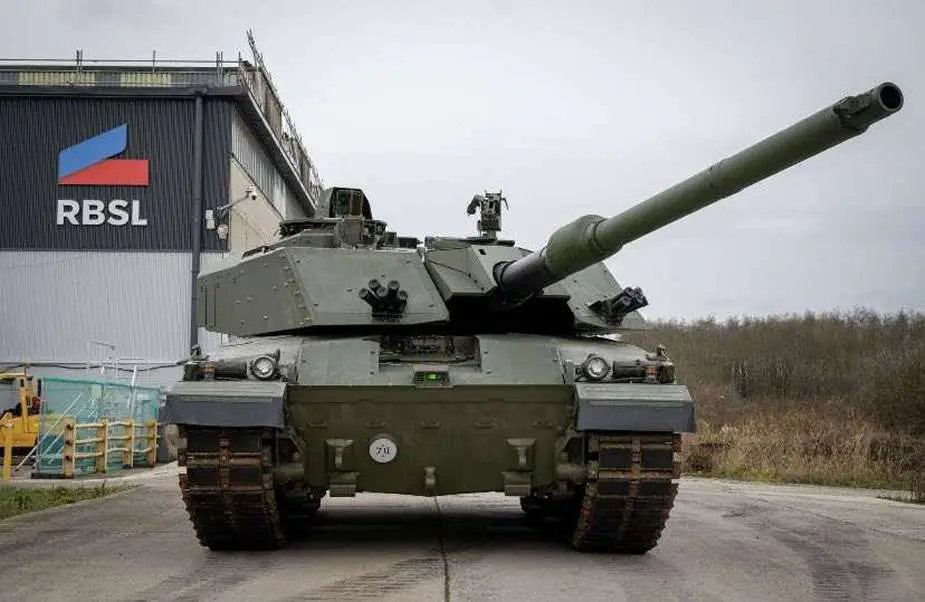United Kingdom to start field tests with new Challenger 3 tank prototype in Germany
On February 15, 2024, at the International Armoured Vehicles conference in London, the RBSL consortium (Rheinmetall BAE Systems Land) presented the prototype of the new British Challenger 3 tank for the first time. This prototype was sent to Unterlüß, Germany, on February 19, 2024, where it underwent testing with its new German Rheinmetall Rh120 120mm cannon.
Follow Army Recognition on Google News at this link

RBSL presented the prototype of the new British Challenger 3 tank at the International Armoured Vehicles conference in London. (Picture source: RBSL)
The British Army is undergoing a transformation called Future Soldier, focusing on three armored vehicles: 148 Challenger 3 tanks, 589 Ajax armored fighting vehicles, and 623 Boxer wheeled armored personnel carriers. The Queen's Royal Hussars and the Royal Tank Regiment will each retain 56 Challenger 3 tanks, with the remaining vehicles upgraded for training and as combat reserves. The King's Royal Hussars will replace their current Challenger 2s with Ajax vehicles.
As part of an £800 million contract signed in 2021, all British tanks will undergo modernization at the RBSL factory in Telford, UK. The initial operational capability of the Challenger 3 is expected by 2027, with full operational capability planned for 2030.
Until now, only the Challenger 3 technology demonstrator has been shown to the public, aimed at testing the basic design, technologies, components, subsystem integration, and human-machine interaction. Based on these tests, a modified prototype was built and unveiled three weeks ago, accurately representing the future production model of the Challenger 3.
The main armament of the Challenger 3 will be the Rh120/L55A1CR3 120mm smoothbore cannon, similar to those found in Leopard 2 A7V and future Leopard 2 A8 tanks. The British Army plans to use newly developed British-German EKE (Enhanced Kinetic Energy) projectiles, likely subcaliber rounds with higher muzzle velocity and probably made of tungsten.
The tank will also have a coaxial L94A1 7.62mm machine gun, with mounts for an additional L37A2 (7.62mm) or L1A2/L111A1 (12.7mm) machine gun. Two 66mm smoke grenade launchers are also mounted on the turret.
The modernization includes a new Hydrogas suspension system, an enhanced V12 Perkins Condor CV12-9A diesel engine with up to 1500 horsepower, and an improved David Brown Santasalo TN54E transmission with six forward and two reverse gears. The basic configuration weight of approximately 66 tons makes the tank comparable to the M1A2 SEPv3 and Leopard 2 A7V tanks.
Designed for a crew of four, the Challenger 3 is equipped with a 360-degree weapon traverse capability and can adjust its weapon elevation from -9° to +20°, allowing for great flexibility and precision in targeting. The Challenger 3 has a length of 11.5 meters, a width of 3.5 meters, and a height of 2.5 meters, and weighs 66 tons.
Although still in its prototype version, the presentation and testing of it mark an important moment in the development of the new British army tanks. Scheduled for 2030, this new main battle tank seems to be on the right track, but the results of its tests in Germany are yet to be seen.
- Hits: 2268
















